![]()
Sutter's Mill #12 Meteorite
The twelth find recorded by NASA from the April 22nd 2012 meteorite fall of a rare carbonaceous chondrite in El Dorado County California.
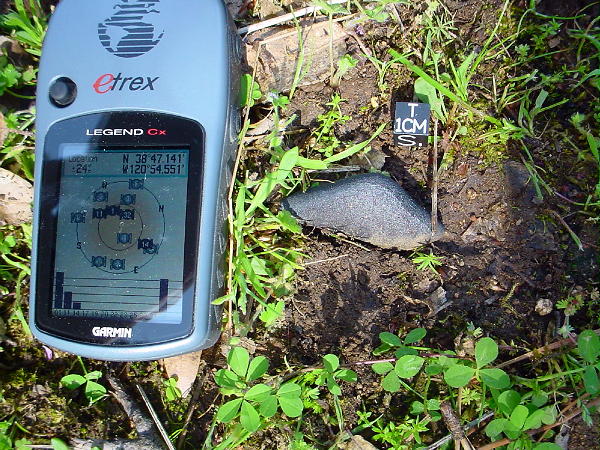
Much has been written about the Sutter's Mill meteorite that fell on April 22nd 2012 in the Lotus/Coloma area of northern California. And in the future, much more will be written about this meteorite. Much more will HAVE to be written, because this is a significant meteorite and the Sutter's Mill story has just begun. Even as I write this article, the very name "Sutter's Mill" has just been formally-approved for this meteorite. And although the name "Sutter's Mill" now appears in the Meteoritical Bulletin Database, and it is clearly a rare carbonaceous chondrite, its exact classification has yet to be announced.
Clearly it is too soon to write "The Whole Story" about the Sutter's Mill Meteorite. And a recap of its recovery is too recent and too well documented to offer any new or pertinent information. But I could write about my personal experiences while searching in the Sutter's Mill strewn-field. I could narrow my focus and just write about how one of the stones from this fall came to be found. I can write with some firsthand knowledge about the recovery of this stone, because it happened right in front of me.
Of course, I'm talking about the 17gram stone that my wife, Moni Waiblinger, found while volunteering on a search with NASA: Sutter's Mill #12
At first, Moni wasn't too keen on the idea of joining a group search where, if she made a find, it would have to be given to the property owner. But I explained to Moni that the property owners (Merv and Eugenia de Haas) had made it clear that they were only going to let NASA volunteers onto their property, and if anything was found, it was going to be donated to NASA researchers. Besides, we had arrived too late (at the end of the first week) and the local property owners had already come to the end of their patiance with all of the "meteor hunters", and getting permission to hunt private property had become not only very difficult, but contentious. So, with our options dwindling, we decided to volunteer our services to the recovery effort spear-headed by Peter Jenniskens and Bev Girden (NASA-Ames) and the small group of volunteers that they mustered.
We arrived at the assigned meeting spot (the parking lot of the Museum in Sutter's Mill State Historical Park)early on Sunday morning, now one-full-week after the fall of this meteorite. After the team briefing by Peter and Bev, we caravaned to the "de Haas Farm" in Lotus.
Well, here is the rest of the story by the finder, Moni Waiblinger, in her own words:
Bob and I decided to join Peter and Bev.... and their group of volunteers to search for the meteorite at a farm property 2 miles south of Lotus.
At arrival, the owner's brother and his wife (Al and Eugena de Haas) greeted us and told us we were allowed to hunt anywhere on their property.
Before we started walking down the hill to where the horse corral was located, I took several group photos of every one present.
We all started walking down the hill to the corral.
We all proceeded inside the corral and it was decided that we would all form a line and move (in unison) across the pasture. We, first, lined-up against one side of the fence
and then slowly walked to the opposite side searching for any fallen rocks. We all turned and went in another direction. We did this twice, but no finds were made.
Couple of us continued to walk around the corral and kept searching randomly, while others were standing in a group discussing our next move.
Few rocks or pebbles were in the area.
I searched under the bushes and trees and joined with another volunteer named John, and we both continued our "random" walk. We were discussing how lucky one has to be to find a meteorite, any meteorite, even if it is in a middle of strewn-field with many others. We felt we would have to have luck on our side and and be in the proper state-of-mind with pure contentment.
Within seconds of me saying this to John, I spotted a grey rock on the ground!
I mentioned we better start at a place without a lot of grass (and other vegetation) and Al de Haas replied that his brother's horse corral would be the place to start.
Later, I would think how funny it was that the one person not in the pictures (the one taking the pictures) would eventually be the "finder".
Three horses were inside the fence with one of them was quite protective of the other two.
He intimidated a couple of us by running around and the owner cautioned us, but he also mentioned that the horse is "alright, just be alert around him".
The owner undid the chain around the posts and Peter entered the corral first and greeted the horse, well, the horse really greeted him first.
Well, as Moni said to me, "The rest is all now history".
Before I head-out the door again for a return trip, here are a few of my images of the recovery of Sutter's Mill number 12:
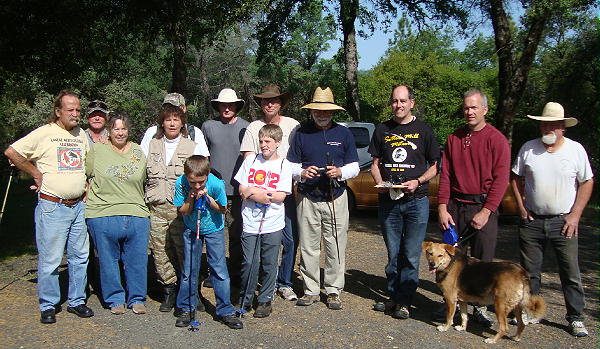
Group shot - image is of the [unidentified] meteorite hunters (minus Moni Waiblinger)
who volunteered to join the NASA Search Team at the "de Haas Family Farm".
(Image taken by Moni Waiblinger.)
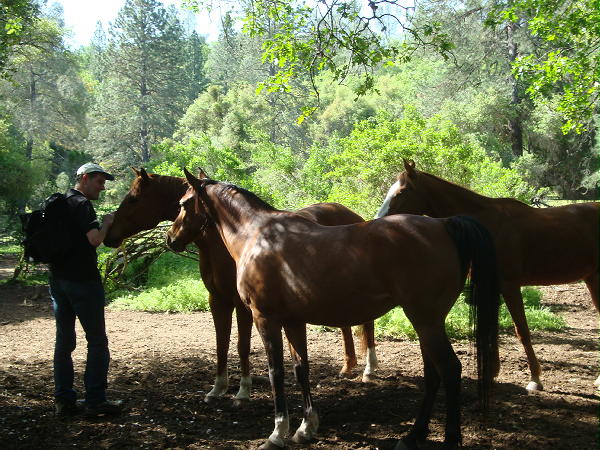
NASA search team leader, Peter Jenniskens, makes friends with the horses in the pasture
before the search party enters the field.
By this time, I had already informed Peter that this pasture and the surrounding search area was too far south
to have any chance of finding a stone from the Sutter's Mill fall, and that Moni and I would only stay and
search for an hour, and then would depart to return to Coloma. Only 55 minutes later I would regret making
those comments, as that was all the time Moni needed to find her meteorite, Sutter's Mill 12 (17grams).
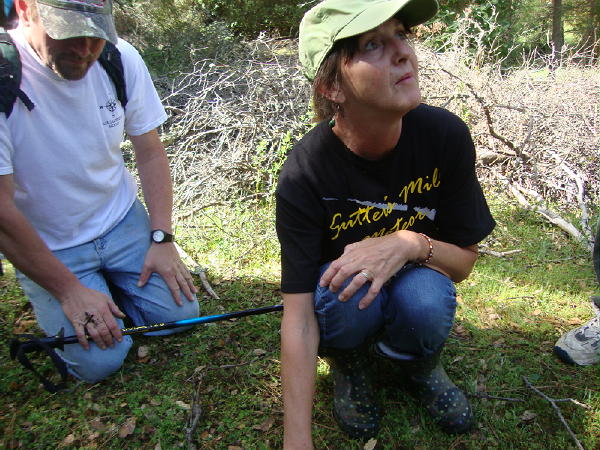
My wife, Monika Waiblinger, points down to the stone she has found (just a few minutes earlier) and looks up (still in shock)
and in apparent disbelief, might be asking, "You're not kidding me, are you? Are you telling me that after only 2 days of hunting,
I've already found a Sutter's Mill Meteorite?" (Image taken by an even more stunned husband.)
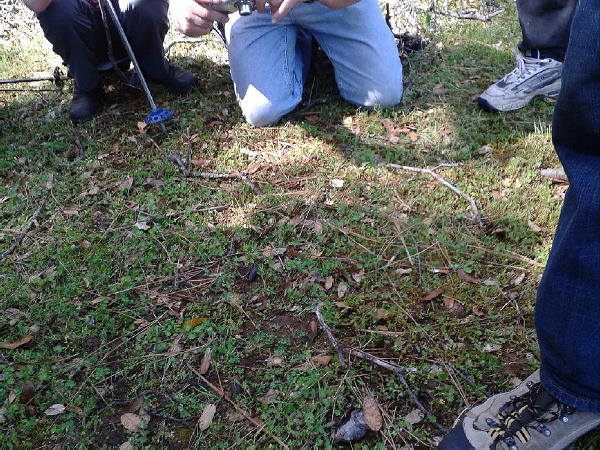
Surface conditions where the find was made. (In-situ image taken by Bob Verish)
Almost immediately, people start to circle around Moni's just found stone, mostly to take images,
but also to keep away any curious dogs or horses.
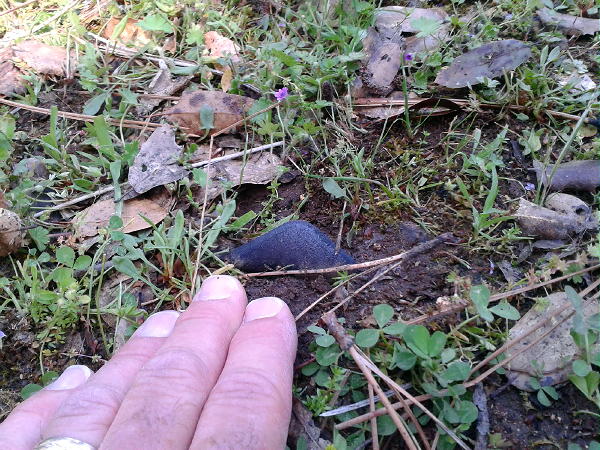
Sutter's Mill - Carbonaceous (C) Chondrite - (In-situ image taken by Bob Verish)
My first close-up image of Moni's find before I remembered to place my cube-scale and GPS.
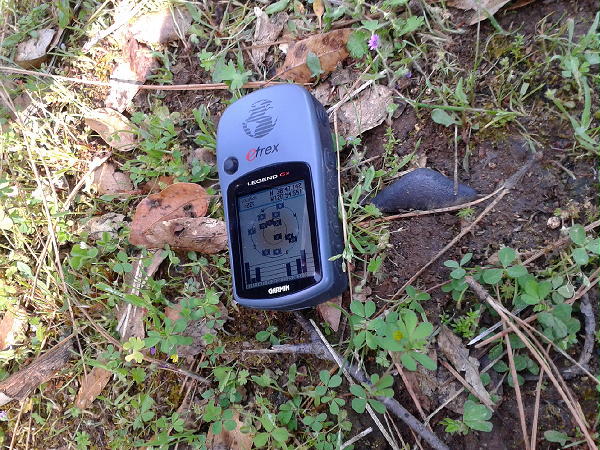
Sutter's Mill - Carbonaceous (C) Chondrite - (In-situ image taken by Bob Verish)
My image of Moni's find before I remembered to place my cube-scale.
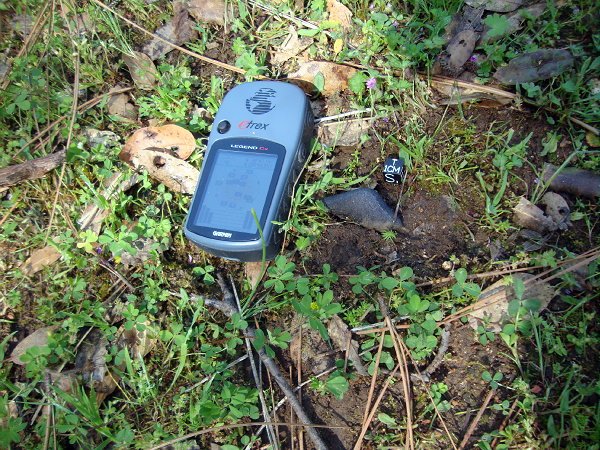
Sutter's Mill - Carbonaceous (C) Chondrite - (In-situ image taken by Bob Verish)
My close-up image of Moni's find after I remembered to use my cube-scale and GPS.
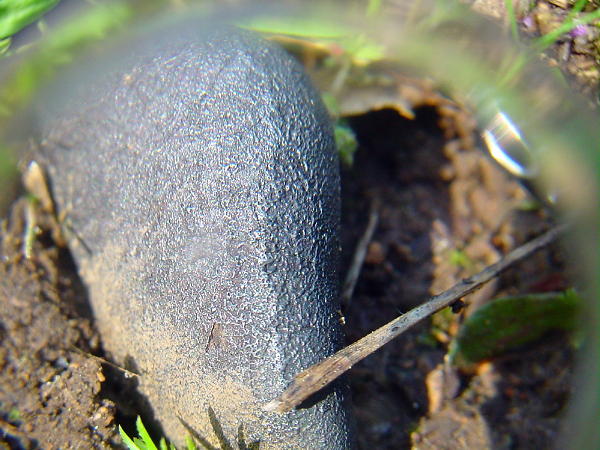
Sutter's Mill - Carbonaceous (C) Chondrite - Macro image taken in-the-field by Bob Verish
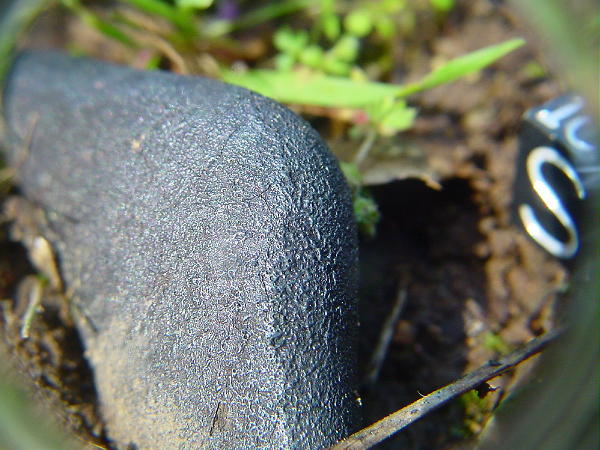
Sutter's Mill - Carbonaceous (C) Chondrite - Macro image taken in-the-field by Bob Verish
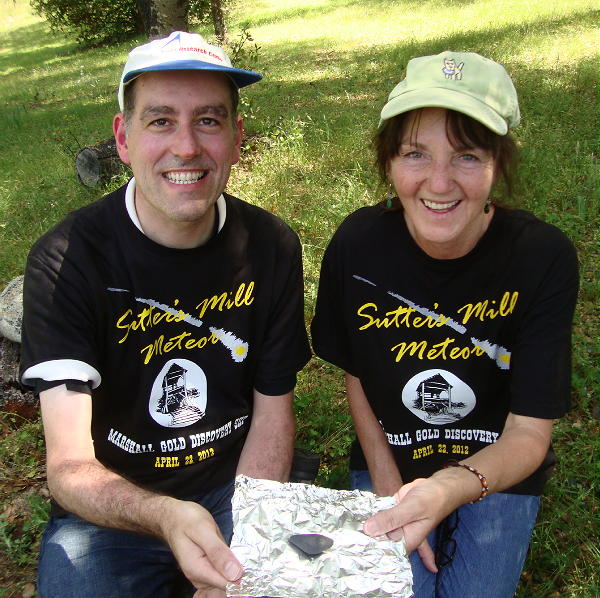
The smiling finder, Moni Waiblinger, next to the even more happy recipient, Peter Jenniskens, holding the prized meteorite.
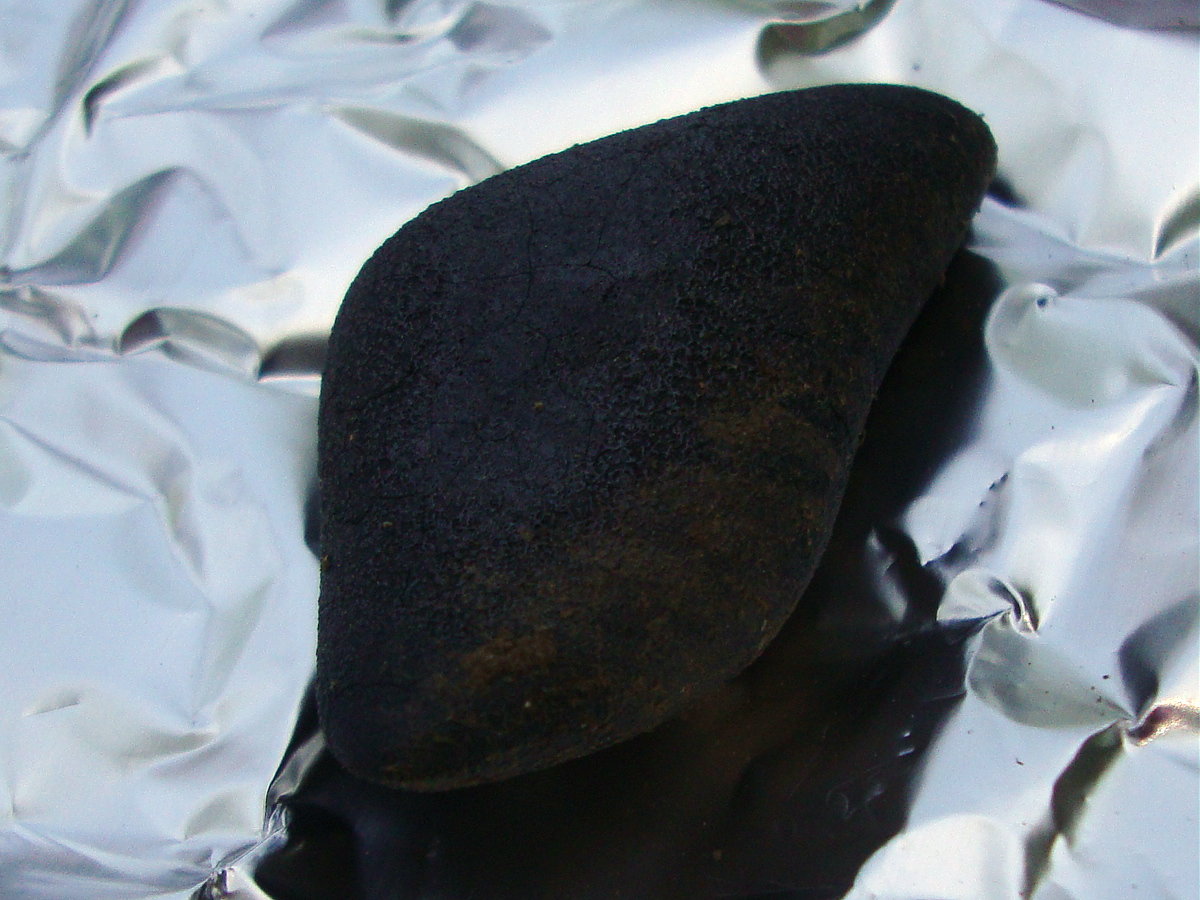
Sutter's Mill 12 - Carbonaceous (C) Chondrite - Macro image taken in-the-field by Bob Verish
Before Peter takes SM12 back with him to his lab, I suggest that I take more "macro" images
(as I had done with the above images while SM12 was still "in-situ")in order to record up-close and
in detail the exact condition of the stone prior to its being transported. These "macro images" are
a quick & dirty in-the-field method of taking close-ups by simply placing a convex lens in front of
my digital camera's optics. The following images are those "macro" images:
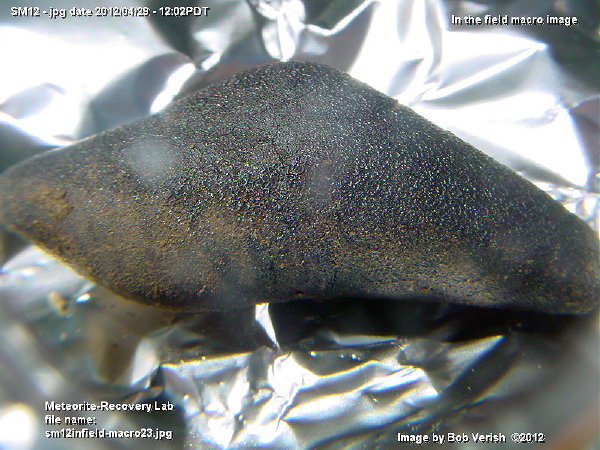
Sutter's Mill - Carbonaceous(C) Chondrite - Macro image taken in-the-field by Bob Verish
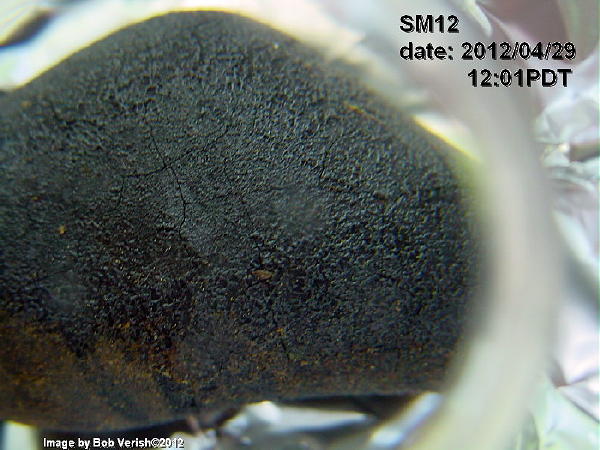
Sutter's Mill - Carbonaceous(C) Chondrite - Macro image taken in-the-field by Bob Verish
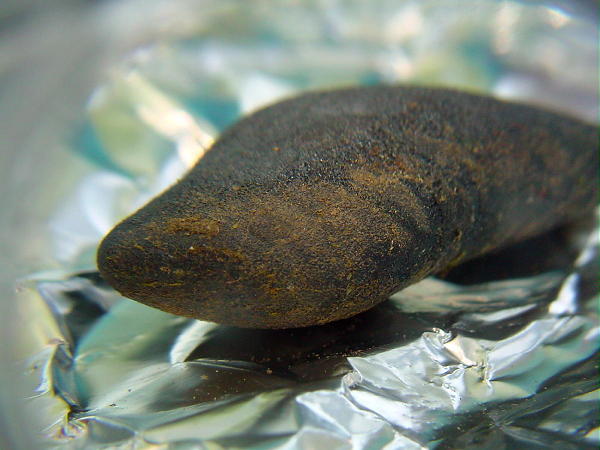
Sutter's Mill - Carbonaceous(C) Chondrite - Macro image taken in-the-field by Bob Verish
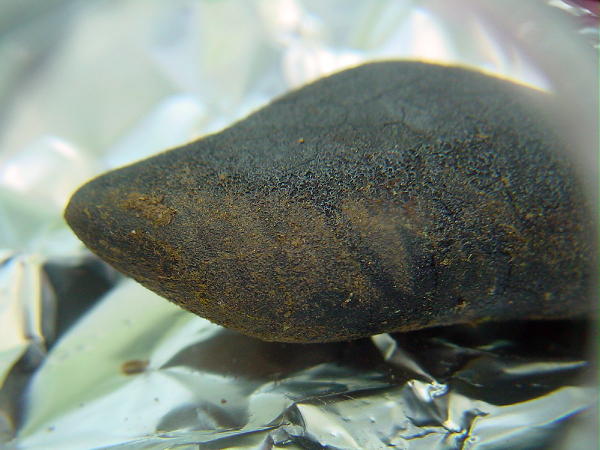
Sutter's Mill - Carbonaceous(C) Chondrite - Macro image taken in-the-field by Bob Verish
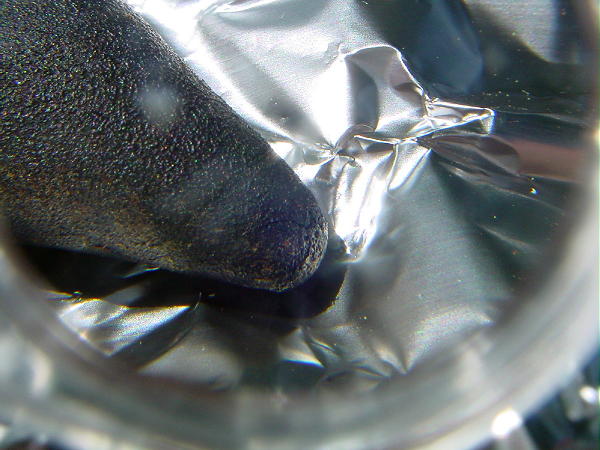
Sutter's Mill - Carbonaceous(C) Chondrite - Macro image taken in-the-field by Bob Verish
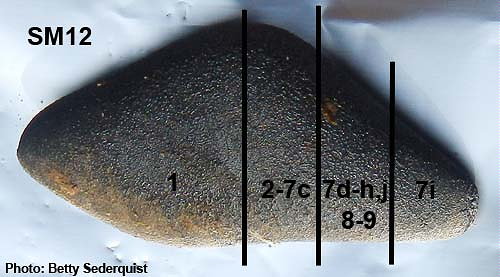
Sutter's Mill 12 has already been cut and divied-up to be shared with many researchers. The remainder is stored at a NASA facility in a pressurized container of nitrogen.
Hope you enjoyed the images!
For more information about the Sutter's Mill meteorite, see "References" below.
1) From the "NASA News and Features" website: Meteorite Discovery Spurs Hunt For More Pieces -
05.10.12: Meteorite fragments were recently scattered around Sutter's Mill in California, - "NASA Asks Public to Provide Videos and Photos of Meteor"
2) From the "NASA News" website: MEDIA ADVISORY : M12-41 - "NASA Asks Public to Provide Videos and Photos of Meteor"
MOFFETT FIELD, Calif. – NASA and the SETI Institute are asking the public for more information to help find amateur photos and video footage of the daylight meteor that illuminated the sky over the Sierra Nevada mountains and created sonic booms that were heard over a wide area at 7:51 a.m. PDT Sunday, April 22, 2012.
| Some of the above images in this article are in the public domain because it was created by NASA. NASA copyright policy states that "NASA material is not protected by copyright". (See Template:PD-USGov, NASA copyright policy page or ARC Image Use Policy.) |
Post Script:
As an added bonus, I've updated this webpage to include some images that I took of "SM5" shortly after I saw it for the first time (and immediately realized that it wasn't a meteorite, let alone a carbonaceous stone from the Sutter's Mill fall). Again, "SM5" is not a meteorite. I've identified it as a well-rounded terrestrial pebble covered in asphalt. No different from those that we saw in the parking lots back in Coloma and Lotus. It's a type of meteor-wrong that I've given the nickname of "hear-breaker", because if I were to walk-up and spot this stone on the ground, it would cause my heart to leap-up into my throat. That is, until I picked it up and looked at it closer, and then that's when my heart would be broken. Take a look at the images below to see what I mean:
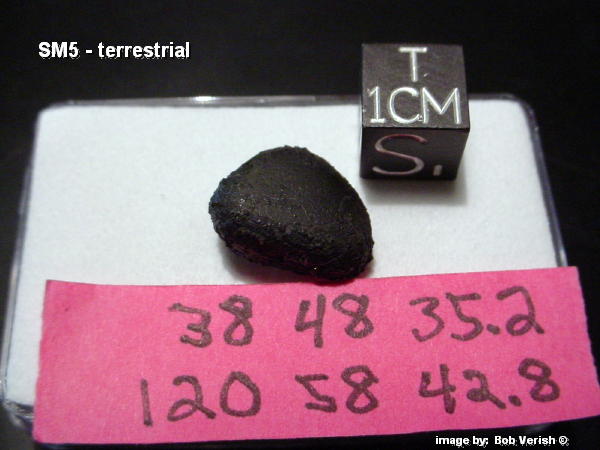
("Click" on above image in order to ENLARGE.)
Meteor-wrong - Asphalt-covered pebble - Image of "SM5" taken indoors at the cafe, by Bob Verish
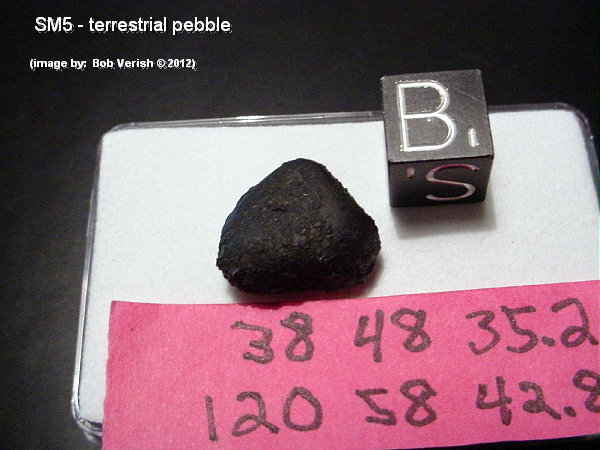
("Click" on above image in order to ENLARGE.)
Meteor-wrong - Asphalt-covered pebble - image of "SM5" taken indoors at the cafe, by Bob Verish
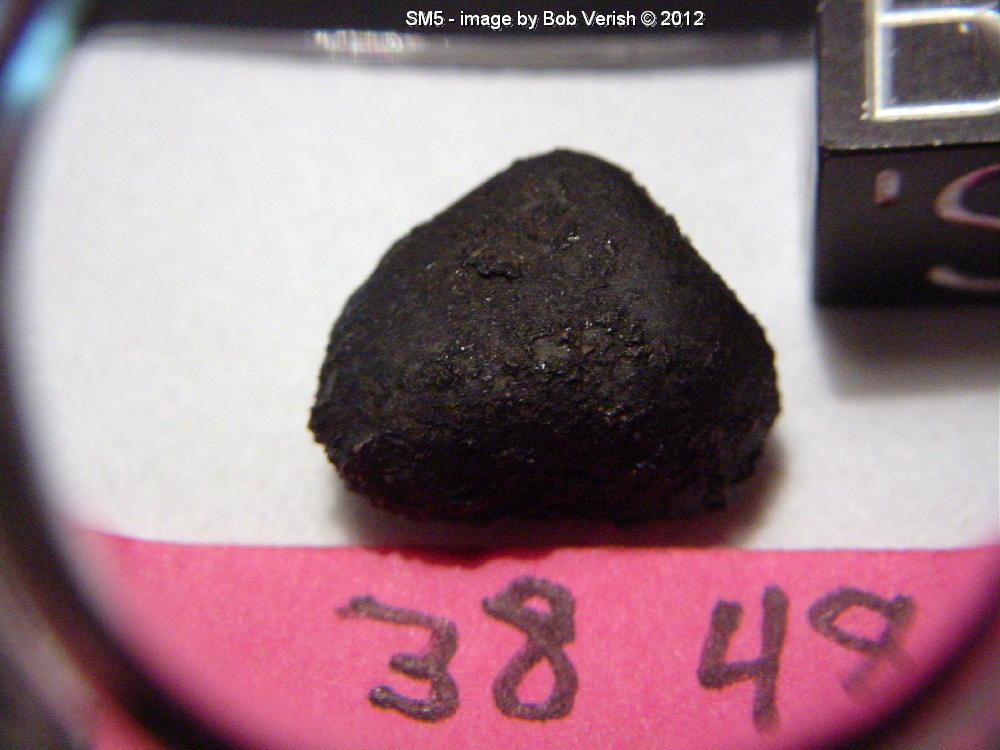
("Click" on above image in order to ENLARGE.)
Meteor-wrong - Asphalt-covered pebble - Macro image of "SM5" taken indoors at the cafe, by Bob Verish
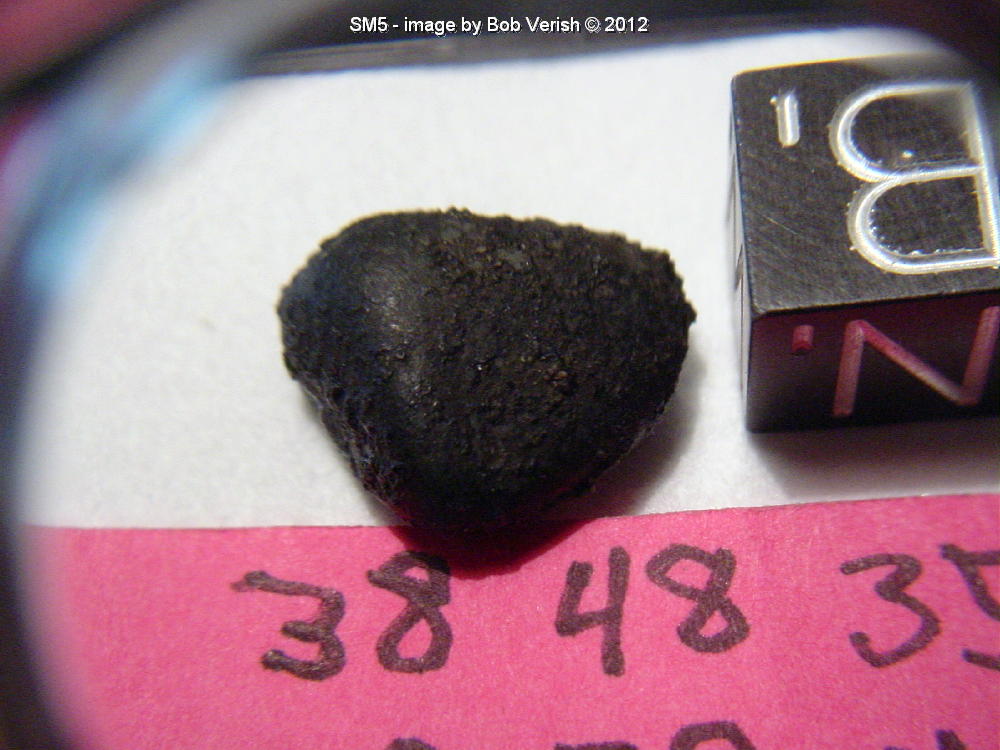
("Click" on above image in order to ENLARGE.)
Meteor-wrong - Asphalt-covered pebble - Macro image of "SM5" taken indoors at the cafe, by Bob Verish
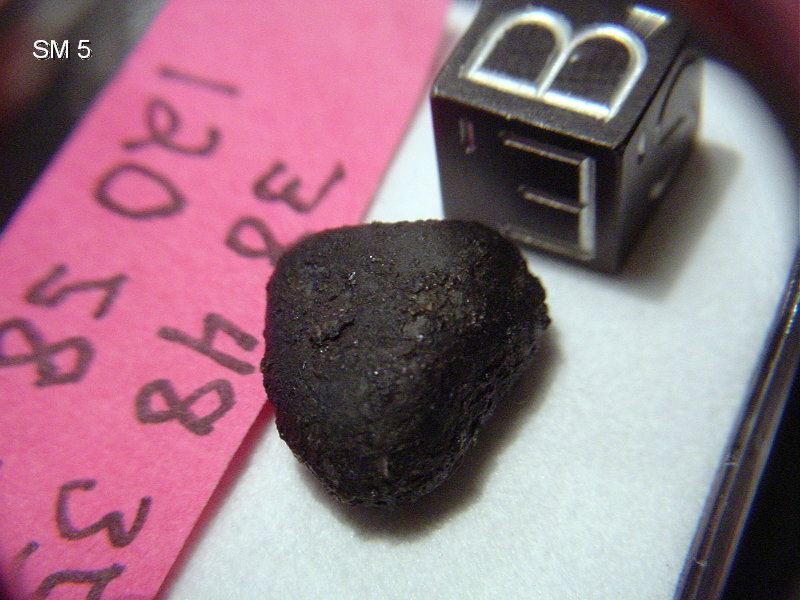
("Click" on above image in order to ENLARGE.)
Meteor-wrong - Asphalt-covered pebble - Macro image of "SM5" taken indoors at the cafe, by Bob Verish
The mystery is, given the coordinates where it was found (which is miles from the nearest pavement), how did that stone get to where it was found? If it was "planted" at that spot, that would certainly be a cruel prank to pull on any hopeful "finder".
My previous articles can be found *HERE*
For for more information, please contact me by email:
Bolide*chaser
